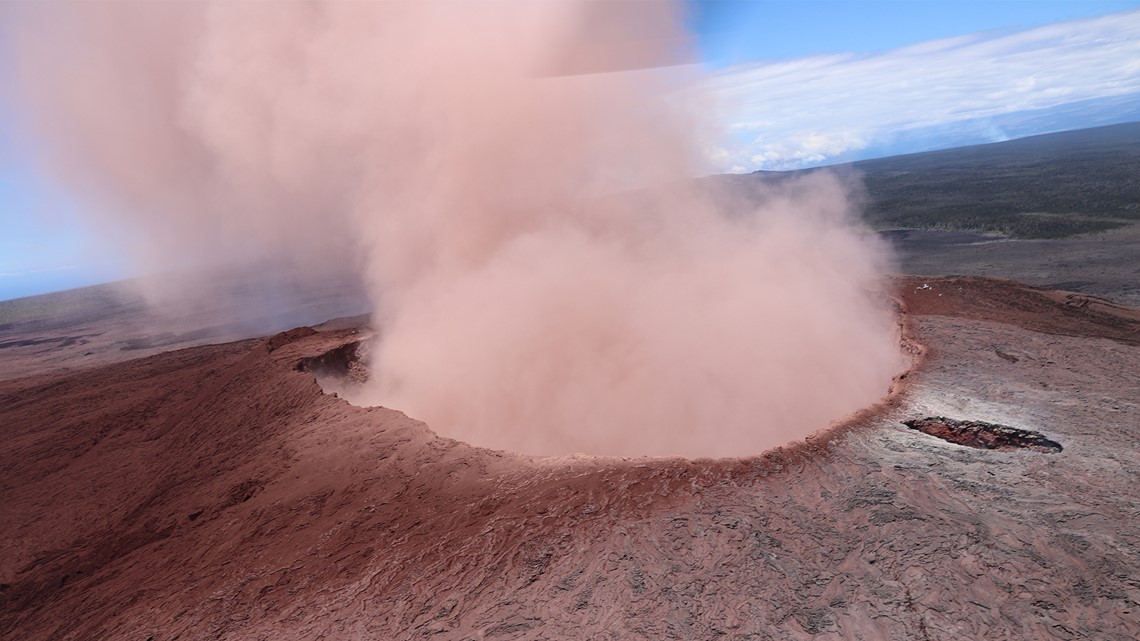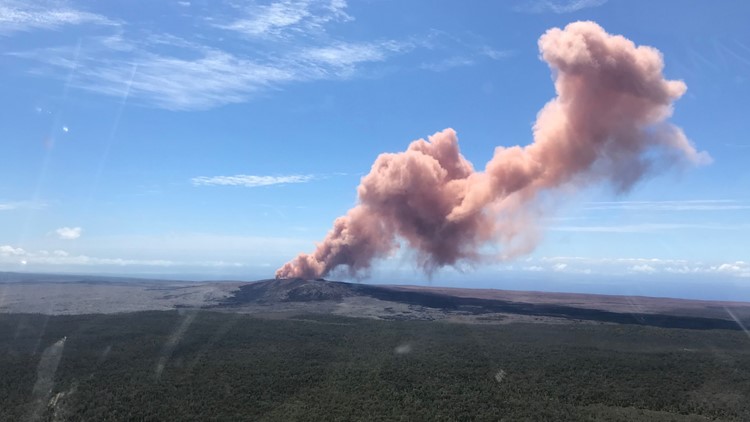HONOLULU — Another batch of earthquakes hit Hawaii on Friday as hundreds of residents rushed to evacuate safely and lava slowly bubbled into neighborhoods, destroying several homes.
Two back-to-back earthquakes, first a 5.4 magnitude then a 6.9 magnitude, were recorded by the U.S. Geological Survey along the eastern coast of Hawaii’s Big Island, where the Kilauea volcano erupted. There have been earthquakes on the island for several days, due to the magma that was pushing up through the volcano.
Hawaii officials have ordered evacuations of those in the path of the volcano and warned Friday that seniors, young people and those with respiratory problems should leave nearby areas immediately because of extremely high levels of sulfur dioxide gas.
Some 1,500 people fled late Thursday from a small residential area on the island after the initial eruption sent lava snaking through a forest, spurting from a 500-foot crack and flowing down a residential street.
Mayor Wil Okabe told the Associated Press that two homes have burned and officials are still working to confirm the extent of damage, noting the homes likely burned to the ground. The earthquakes were not strong enough to cause a tsunami. No tsunami threat or advisory is in place, the Pacific Tsunami Warning Center said.
Hawaii Gov. David Ige issued the mandatory evacuation order for the Leilani Estates and Lanipuna Gardens subdivisions and activated the National Guard to help with evacuations and security.


Hawaii civil defense officials said on Friday that the volcano is still erupting and driving up sulfur dixoide gas to extremely high levels.
Exposure to sulfur dioxide gas can cause irritation or burns, sore throats, runny noses, burning eyes and coughing.
There were no immediate reports of injuries.
At one point, lava fountains were shooting 150 feet in the air, and molten lava spread out over an area about 200 yards wide behind one house in Leilani Estates, Big Island resident Ikaika Marzo told the Honolulu Star-Advertiser .
“It sounds like a jet engine. It’s going hard,” he said.
The evacuees were sheltering at two community centers near the town of Pahoa on the Big Island.
"The danger is of such magnitude that it warrants pre-emptive and protective action in order to provide for the safety, health and welfare of the residents of Leilani Estates and surrounding areas," Ige tweeted.
Resident Jeremiah Osuna captured drone footage of the lava burning through the trees, a scene he described as a “curtain of fire.”
“It sounded like if you were to put a bunch of rocks into a dryer and turn it on as high as you could. You could just smell sulfur and burning trees and underbrush and stuff,” he told Honolulu television station KHON.
The eruption is not an unusual event there: "This eruption is typical of Kilauea," said Jessica Johnson, a geophysicist at the University of East Anglia, who worked for two years at the Hawaiian Volcano Observatory. She said Kilauea is one of the most active and well-monitored volcanoes in the world.
Officials said there is no way to predict how long the eruption will continue or what shape it will take. “This eruption could be finished or could go on for a long time," Johnson said.
After the 500-foot fissure appeared in Leilani Estates, it generated mostly spatter and intermittent bubble bursts for about two hours, with lava stopping after only a few yards, according to the Hawaiian Volcano Observatory, but could start again at any moment.
The eruption comes after days of earthquakes that rattled the area’s Puna district. A nearby school was closed due to the ongoing seismic activity, and several roadways cracked under the strain of the constant temblors. A magnitude 5.0 earthquake was recorded hours before the eruption began Thursday.
The Puu Oo crater floor began to collapse Monday, triggering a series of earthquakes and pushing the lava into new underground chambers.
The collapse caused magma to push more than 10 miles downslope toward the populated southeast coastline of the island.
USGS geologist Janet Babb said the magma crossed under Highway 130, which leads to a popular volcano access point, on Tuesday night.
Contributing: Doyle Rice, USA TODAY; The Associated Press



